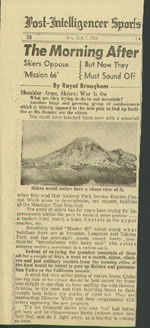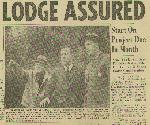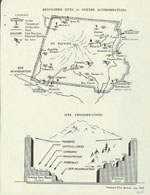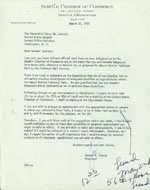Developing Paradise: Mission 66
|
An ambitious National Parks Service ten-year plan, promulgated in 1956, sought to improve facilities and to protect scenic and historic resources. In the style of the postwar era, it proposed "widest possible use" and "maximum preservation..." without anticipating conflicts between these two goals. Popular elsewhere, Mission 66 became a lightning rod for controversy over Mt. Rainier National Park. Park officials intended to relocate visitor facilities from high, fragile areas, especially Paradise Valley, to much lower terrain, or even outside the Park. |
||
|
Tourist industry representatives and other boosters, viewing Rainier as a tourist destination, championed more development, especially a new and grand hotel at Paradise. They enlisted the support of political leaders: governors and members of Congress, including the state's increasingly influential U.S. Senators Henry M. Jackson and Warren G. Magnuson. Jackson took a keen interest in the expanding of facilities at Rainier, making requests and demands of Park Service officials, wheedling appropriations, and remaining attentive to his constituents. After many studies were funded, the choice at Paradise was not the hotel once recommended but a day-use facility. Its design was not universally popular, and it became known in some circles at "the Roundhouse." In 1987, several years after the death of Senator Jackson, it was named for him. The ironic result of many years of contention has been that the development of Paradise has drawn hordes of visitors there instead of dispersing them throughout the park. |
||




